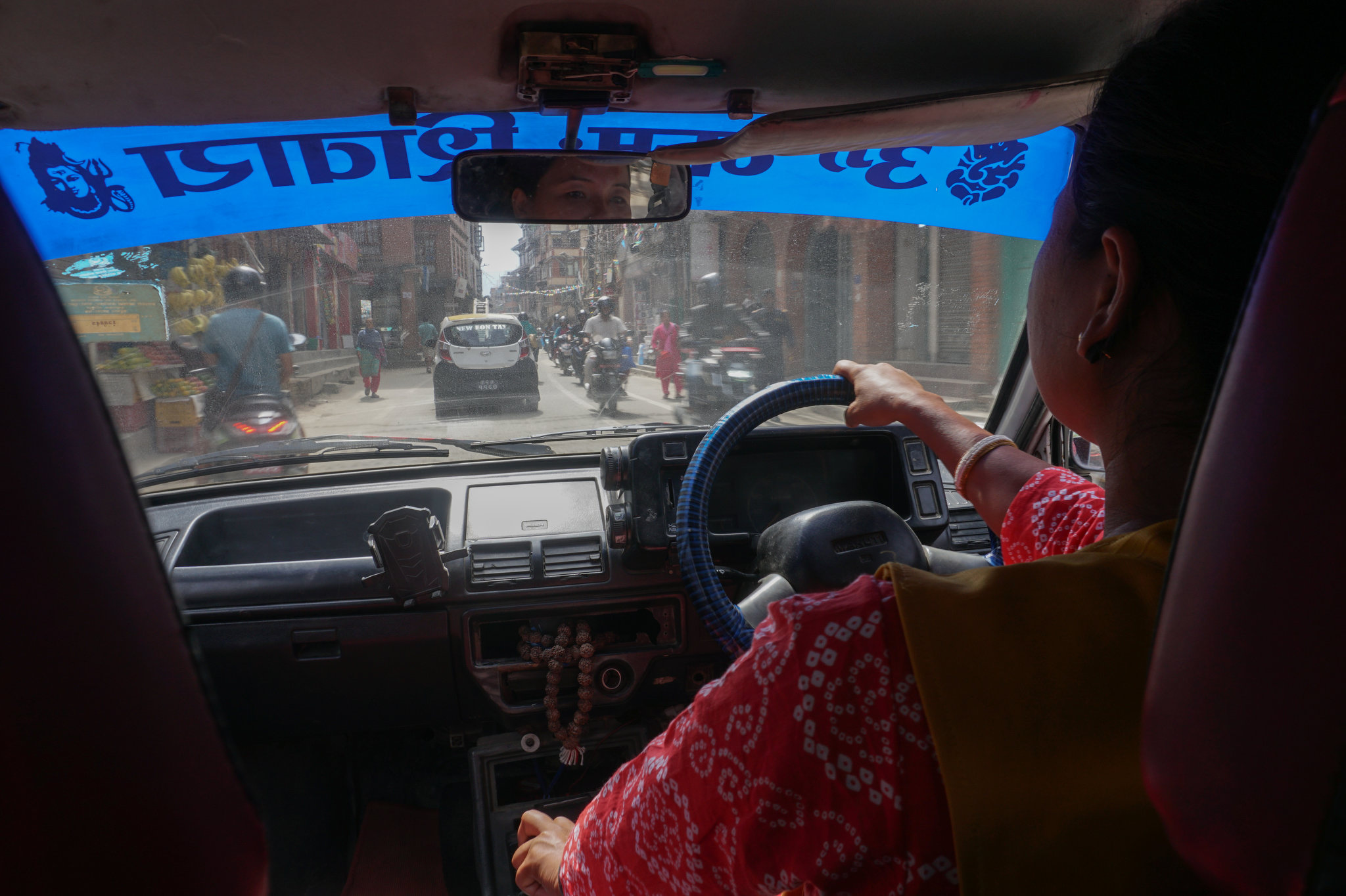
Yam Kumari Kandel, GPJ Nepal
Bidhya Kumari Lama poses in front of her taxi in Kathmandu.
KATHMANDU, NEPAL — Bidhya Kumari Lama is one of the few women working as a taxi driver in the streets of Kathmandu Valley.
Among the 12,350 current licensed taxis in the metropolitan area of 3 million, only nine are women, says Raj Kumar Shrestha, chairman of the Nepal Meter Taxi Entrepreneurs Association. There are more women than that working solely through riding apps, which don’t work with a meter and don’t require a government-issued taxi license in Nepal.
Lama is one of them. Since transitioning from running a grocery store to transporting passengers through apps like Pathao, the 33-year-old’s daily earnings increased from 500 Nepali rupees (about 4 United States dollars) to 4,000 rupees (30 dollars) a day. She learned how to drive at 28 just to get this job.
“I was beyond happy when I got my driving license,” Lama says. That was 2018, when she used to borrow her uncle’s taxi to practice. To encourage her, her uncle let her keep whatever she earned when driving passengers in his vehicle. By 2021, she had managed to save enough to afford a down payment on a car.



Lama started driving for Pathao, the Bangladeshi ride-hailing app that dominates the Nepali market, and hasn’t looked back since. She rented a bigger apartment in a nicer area; paying for her 9-year-old daughter’s school fees became more manageable. “I’m living the life I want.”
Aside from the financial benefits, Lama says driving passengers earns her respect. “Men appreciate seeing a woman driving a taxi,” she says. “Passengers like to take selfies with me.” In her Pathao reviews, she says, riders often describe her as a safe driver. “It makes me proud to see a woman driving a taxi in a masculine society,” says Kanchan Shrestha, Lama’s neighbor and regular passenger.
Working through the app gives her a sense of safety that doesn’t come with driving a regular cab, she says. “Being a woman, it’s difficult to keep offering rides to strangers.” While the app does provide more of a sense of security because it allows drivers to know who their passengers are, it doesn’t protect them from those passengers. Pathao’s marketing manager, Suraksha Hamal, says the company doesn’t employ specific safety protocols for their women drivers.
Recently, Lama has been sharing her skills with her family — so far, she has taught six relatives how to drive. “We were inspired after seeing her success,” says Sandesh Tamrakar, her brother-in-law and one of her apprentices. He changed his mind about moving to Dubai for work and now wants to drive a taxi like Lama.



Lama has been such a strong proponent for ride-hailing that, in 2022, Pathao named her an “Influential Captain,” a recognition awarded to operators for inspiring their peers. “I never dreamed that I would get such an honor,” she says.
There are challenges. The hours are long; sometimes, Lama works from 5 a.m. to 8 p.m., taking breaks only for housework or to take her daughter Diya to school. Drivers also are more exposed to Kathmandu’s pollution and heat, and the poor state of its roads means more frequent visits to the mechanic.
Above all, Lama worries about the rapid increase of ride-sharing workers in the city. Competition has been driving her earnings down gradually — when she started, she sometimes made 8,000 rupees (60 dollars) a day, now she makes only half of that.
Still, she is determined to keep driving. For now, she says, it’s all worth it.
Yam Kumari Kandel is a Global Press Journal reporter based in Nepal.
TRANSLATION NOTE
Sunil Pokhrel, GPJ, translated this article from Nepali.
